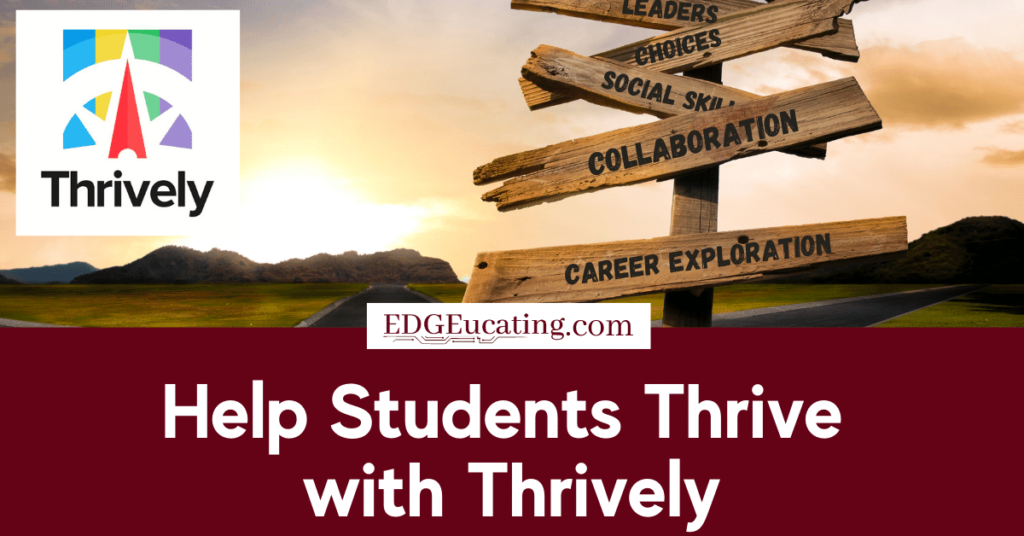What is Thrively?
Finally, a program designed with our special populations in mind, that is truly useful! Thrively is a relatively new web based program that helps students discover their strengths, interests, career aspirations, learning styles and character strengths. I was so excited to discover this platform. It is designed to maximize student benefit while minimizing teacher planning. That’s a win win!!
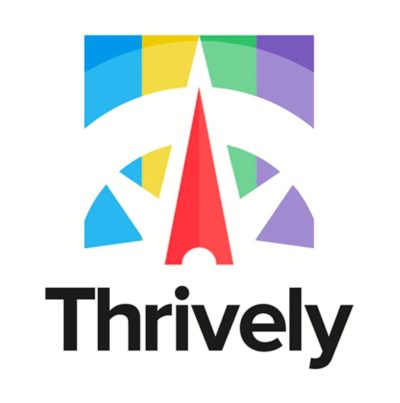
What are special populations?
Special population students include both Special Needs and Gifted and Talented students. These two groups of students sometimes overlap. It is well documented that self-concept plays an important role in the academic achievement of elementary students determined as a special population. Often teachers are left struggling to adequately service their social emotional needs and develop them outside of academics, despite the requirements. Saying this must be done versus having a realistic platform for which to actually carry out these activities are two very different realities.
Image from Engage Coach
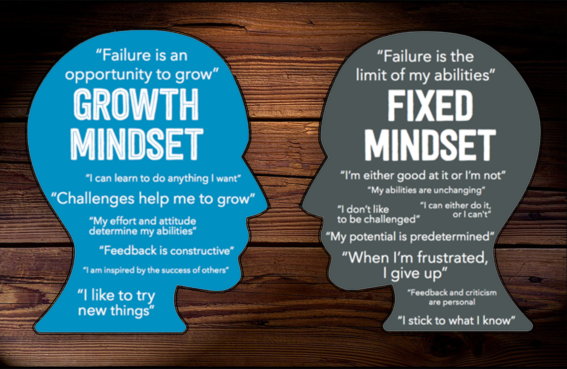
How do teachers incorporate SEL and interests to develop the whole child?
The National Conference of State Legislators (NCSL) explains SEL as “a wide range of skills, attitudes, and behaviors that can affect a student’s success in school and life.” NCSL goes on to say, “critical thinking, managing emotions, working through conflicts, decision making, and team work—all of these are the kind of skills that are not necessarily measured by tests but which round out a student’s education and impact his/her academic success, employ-ability, self-esteem, relationships, as well as civic and community engagement.”
In short, SEL is the skill set that teaches children to be productive members of society. Most teachers can easily list a set of traits or qualities that they hope to see their students exhibit. These include qualities such as independent thinking, self motivated, inquisitive and persistent. Thrively takes these skills even further and combines them with students’ interest and strengths to encourage the student’s whole self development.
Finally, teachers have a method to actually teach these desired skills sets in a way that motivates students to learn and achieve them.
What does the research say?
Thrively is backed by lots of science and research. It utilizes several assessments in order to compile a profile and design an individualized instructional path for each student. The assessments include the THOMAS and MIDAS, in conjunction with their own independently developed Strength Assessment.
The THOMAS assessment is based on the Habits of Mind, which is part of the previously mentioned science and research. The Habits of Mind are an identified set of 16 problem solving, life related skills, necessary to effectively operate in society and promote strategic reasoning, insightfulness, perseverance, creativity and craftsmanship. The understanding and application of these 16 Habits of Mind serve to provide the individual with skills to work through real life situations that equip that person to respond using awareness (cues), thought, and intentional strategy in order to gain a positive outcome.
The THOMAS Assessment builds a personality profile of the test taker and combines the 16 Habits of Mind into four main traits, Dominance, Influence, Steadiness, and Compliance. These traits are known as the DISC personality types.
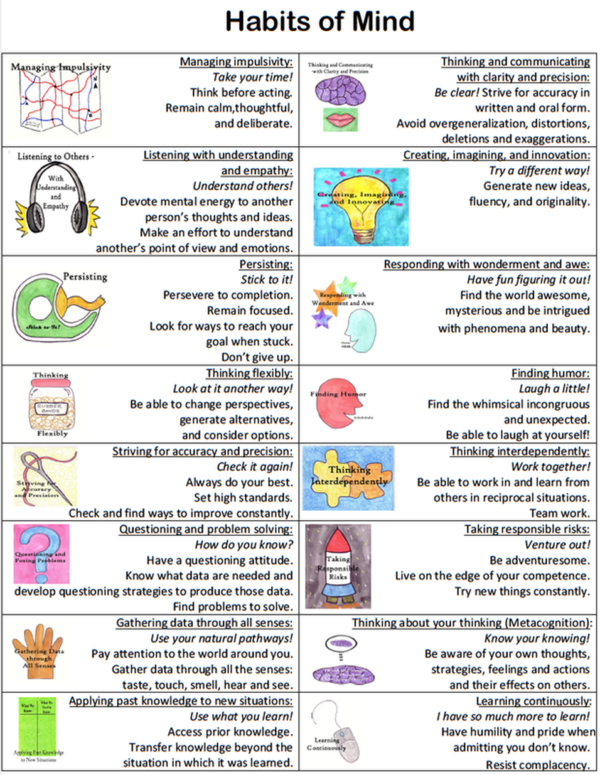
What is the DISC?
Descriptions of the DISC Personality Factors:
1. Dominance: Forceful, competitive, courageous, and aggressive. People who have both Outgoing and Task-oriented traits often exhibit DOMINANT and DIRECT behaviors. They usually focus on results, problem-solving, and the bottom-line.
2. Influence: Outgoing, friendly, and sociable. People who have both Outgoing and People-oriented traits often exhibit INSPIRING and INTERACTIVE behaviors. They usually focus on interacting with people, having fun, and/or creating excitement.
3. Steadiness: Calm, collected, and unpressured. People who have both Reserved and People-oriented traits often exhibit SUPPORTIVE and STEADY behaviors. They usually focus preserving relationships and on creating or maintaining peace and harmony.
4. Compliance: Orderly, respectful, rule-obedient, and traditional. People who have both Reserved and Task-oriented traits often exhibit CAUTIOUS and CAREFUL behaviors. They usually focus on facts, rules, and correctness.
What was the purpose of the THOMAS Assessment?
Specifically, the THOMAS Assessment was created to determine if a candidate would be a good fit for employment in a given job. It is not an intelligence test and there are no right or wrong answers. Potential employers will use the assessment to choose candidates that have higher scores in the areas they feel are best for the position. For example, a question could be: “Do you like to lead in a group?” If you are applying for a position as a manager and you answer negatively, this would impact the likelihood of receiving an offer for this position.
Why you should apply the THOMAS Assessment to your teaching?
So how does this apply to teaching, you ask? Let’s explore this from the aspect of differentiated learning, which all teachers are familiar with.
“Differentiated learning describes a set of principles that enable you to meet the broad range of readiness, interests, abilities, talents, and skills in your classroom,” (Kronowitz, 338). All students are different: from what they wear, how they look, and even how they learn. Howard Gardner suggested that all students do not have one intelligence by which they learn, but there are actually eight intelligences that students have and use:
- Visual/spatial: Students excel at spatial relationships and learn visually
- Verbal/linguistic: Students learn best through language arts
- Mathematical/logical: Students demonstrate skill with numbers and problem solving, they think abstractly and analytically, and they do well when instruction is logically sequenced
- Bodily/kinesthetic: Students have good motor skills, are coordinated, and learn best through hands-on activities
- Musical/rhythmic: Students learn through songs, patterns, rhythms, instruments, chants, listening to music, and other forms of musical expression
- Intrapersonal: Students are introspective and in touch with their feelings, values, and beliefs. They need time along to reflect on their learning and how it relates to them
- Interpersonal: Students are outgoing, sociable, people-oriented, and they learn best by working in groups or interacting with others
- Naturalist: Students demonstrate ability to find patterns in the natural world and the plant and animal life therein
Through reading the research and seeing for myself firsthand about the individuality of children, I know that it is so important to learn about each and every one of my students on an individual and human level. This also a requirement and basis of many gifted programs across the country, that teachers get to know their students from a more personal level. We are to understand and incorporate their individuality into our lessons.
Teachers need to get to know their students both on a personal level and how it relates to school. It is the teacher’s job to figure out the way that each student learns best. This does not mean that the teacher must incorporate all eight intelligences into every lesson, but the teacher needs to make sure that all their lessons are not formatted the same way every time. Each lesson should contain at least a few intelligences so as to motivate and engage the students all the more.
All students learn differently. There is no getting around that. We, as teachers need to be able to recognize the differences between each of our students and try to help them as best we can. I believe that it is so important for teachers to be able to incorporate as many of the different intelligences as possible so the students will get the most out of everything that they learn. The earlier of an age that this starts at, the more engaged and enthusiastic students will be as they progress through the schooling years. Students are the number one priority and teachers should give them the best years of their lives in school.
Image below from Alex Kastrinakis Teaching Strategies

What is the Multiple Intelligence Development Assessment Scales (MIDAS)?
The Multiple Intelligence Development Assessment Scales (MIDAS) were designed based on Gardner’s Theory of Multiple Intelligence to measure multiple intelligence. Howard Gardner of Harvard University originally identified seven distinct intelligences. According to Gardner, this theory, which emerged from cognitive research, “documents the extent to which students possess different kinds of minds and therefore learn, remember, perform, and understand in different ways.” (Cornerstone, 2016) MIDAS gives an overall estimate of a person’s intellectual disposition in each of the eight categories identified by Gardner. The Eight Areas of Multiple Intelligences are Linguistic, Musical, Spatial, Logical-Mathematical, Bodily-Kinesthetic, Interpersonal, Intrapersonal, and Naturalist.
This theory states that each person has a unique cognitive profile composed by at least eight different types of intelligences that are at different levels of development and can be continuously improved, if appropriate conditions like enriched environment are provided. More than 20 years of integration of multiple intelligences theory into career counselling processes across the country have proven that students can get several benefits out of its application, such as the improvement of career decision-making and enhancement of personal development.
More of the research behind Thrively…
Studies, such as the one published in 2010, show that identifying the multiple intelligences of students and correlating them with the academic achievement levels of the students, will contribute an awareness to the self knowledge and self efficacy of the student. This can be most crucial in those special populations, like Special Education and Gifted and Talented.
Gifted and special education students alike are the populations that struggle with identity and self worth. What better way to empower the student than with a sense of self. Giving them an understanding of who they are and ways those strengths and interests fit into various career paths opens up opportunities. This in turn gives the student a sense of belonging and purpose.
Special education students often feel that they have nothing to offer, due to their academic struggles. Having a place for them to explore their interests and potential career paths is priceless. Not to mention, what better way to encourage students than to give them a sense of purpose and something to work toward that they feel they can achieve.
How does Thrively pull all this together?
Thrively’s Strength Assessment takes into account 23 different strength factors as well as your students’ career aspirations and extracurricular interests. Using this information, students are provided with a deeper understanding of their own strengths, leading to a real sense of ownership over their own educational journey. The Thrively Strengths Assessment was developed by renowned pediatric and adolescent neuropsychologists, Dr. Jonine Biesman and Dr. Jayme Neiman-Kimel, and is based on decades of experience studying and working with children.

Numerous research studies have proven that using a model based on multiple intelligences can enhance self-concept and academic achievement, hence the focus shift in schools across the globe to prioritize these.
Image below from Solution Tree Blog
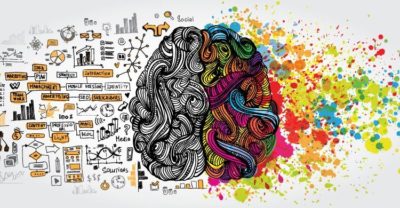
In most higher education institutions today, in addition to learning knowledge and skills necessary to educate students for academics, future educators are being introduced to new ways of thinking and behaving. Research also proves that experiences related to personal attributes influence teachers’ dispositions. A huge focal point for future educators related to these new methods of thinking and behaving and how to guide students in these same areas has been centered around Habits of Mind.
Schools are shifting their focus toward the social emotional needs of students. Most teachers can easily list the qualities they would like to see their students develop but often don’t know exactly how to get them there. When teachers and students employ these Habits of Mind, it requires a combination of many skills, attitudes, past experiences, and inclinations. A Gifted Education Teacher like myself, spends lots of time trying to adequately meet the needs of their students related to these more abstract and very individualized skills. There are only so many hours in a day, which eliminates the reality of individually designing lessons for every single student. Not that we don’t wish we had the time to do so! Not to worry! Thrively has made it all possible.
In addition to assessing and profiling students’ strength areas, Thrively offers a way to truly utilize every student’s interests and strengths to develop them into well rounded individuals. I understand that is saying a lot yet, Thrively delivers! Thrively seamlessly brings together the 4 key areas necessary for personalized learning and growth – Purpose, Growth Mindset, Self Awareness, and Creating Impact. It does this by exposing students to the 4 C’s – Critical Thinking, Collaboration, Communication, and Creativity.
According to the Gallup Student Poll, students are 30 times more likely to be engaged when their teachers know their strengths. This program takes that so much further than just knowing their strengths. Thrively’s platform includes profile assessments, journals, social impact courses, projects, local and online activities, career exploration, digital portfolios, and SEL Lessons.
Following the strengths assessment, students are given a list of their top 5 strengths along with a narrative that gives them a positive outlook and understanding of their identified strengths. Then, local and online activities offer options for students to physically explore their current passions. This encourages school and home connections.
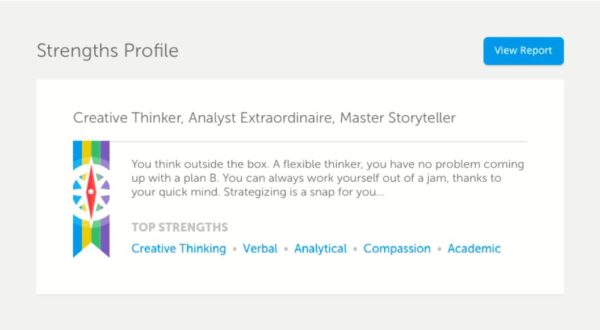
Thrively utilizes engaging video lessons to bring to life experiences such as career exploration and social impact. Students can complete social impact exercises and projects that can be used as passion projects, genius hour, or innovative experiences. These projects are student centered and involve real-world problem solving.
One of my favorite features of this amazing platform is the goal setting features. Thrively offers the opportunity to set and track goals, which is required of both gifted and special education populations. The program offers lessons that teach students about goal setting. It allows students to track their progress toward their personal goals that they have set for themselves. This keeps students accountable while teaching them real life skills that are so important.
In the special education arena, teachers are required to involve students in their own goals setting, particularly in middle school and above. Thrively can be an excellent tool, that will offer real-life, valid direction for these students. Up until now this has been a struggle. Teachers are often attempting to guide their students based on conversations that the students are truly equipped to have. Thrively provides students and teachers with valid data to help guide these students through this very crucial path.

Pathways, Sparks, Projects, and Passion- It’s all rolled into one program with Thrively. Thrively truly individualizes the experience for each student. Students take true and active interest in their own self development with this program. To round off this program, teachers and students can track student progress right inside of the online portfolios.
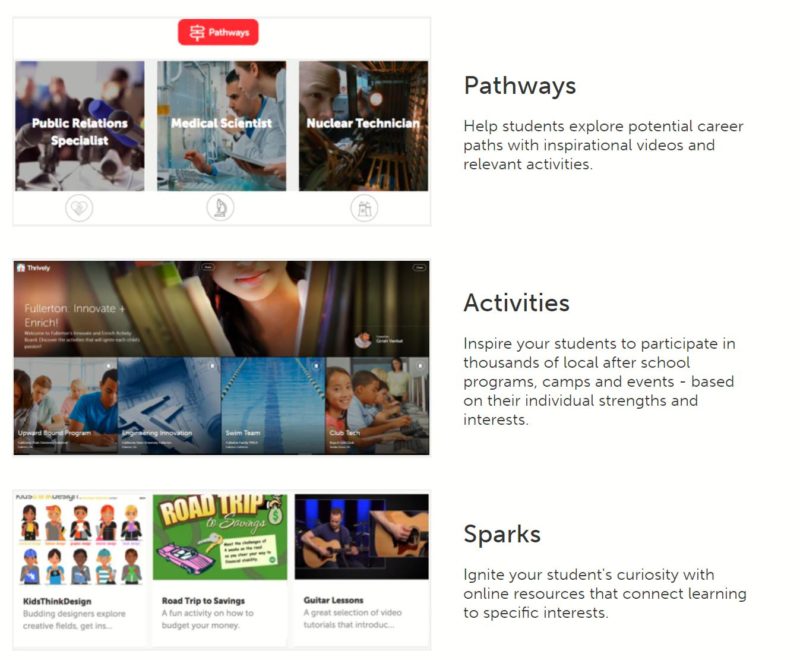
What I think of Thrively?
In order to be fully transparent, I will mention that the platform is not as user friendly as I would like to see. However, I have been able to find what I’m looking for and their customer support is outstanding. Their network of ambassador teachers are also a great resource.
I utilize Thrively as part of my distance learning tools which you can find in the article titled, Top 20 Distance Learning Tools of 2020.
Thrively is a game changer in the world of education! It takes what is normally a seemingly impossible task for teachers and makes it an easily achieved and well designed lesson and process. Teachers can now truly develop the whole child. If you haven’t discovered it – the time is NOW! Check out Thrively today. It has changed the way that I teach and how my students learn!
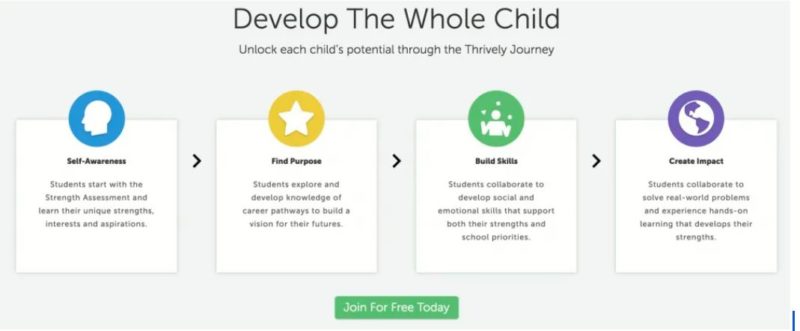
I would love to hear from you about any game changing teaching tools that you use in your classroom. Be sure to comment and let me know. Wishing you THRIVELY teaching!

